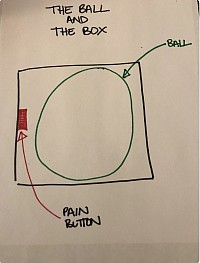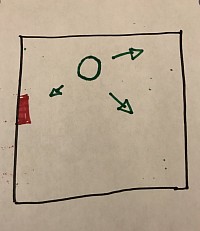The journey of grief
The waves of grief
As for grief, you'll find it comes in waves. When the ship is first wrecked, you're drowning, with wreckage all around you. Everything floating around you, reminds you of the beauty and the magnificence of the ship that was, and is no more. All you can do is float. You find some piece of the wreckage and you hang on for a while. Maybe it's some physical thing. Maybe it's a happy memory or a photograph. Maybe it's a person who is also floating. For a while, all you can do is float. Stay alive.
In the beginning, the waves are 100 feet tall and crash over you without mercy. They come 10 seconds apart and don't even give you time to catch your breath. All you can do is hang on and float. After a while, maybe weeks, maybe months, you'll find the waves are still 100 feet tall, but they come further apart. When they come, they still crash all over you and wipe you out but in between, you can breathe, you can function.
You never know what's going to trigger the grief. It might be a song or a picture but it can be just about anything...and the wave comes crashing. In between waves, there is life. Somewhere down the line, and it's different for everybody, you find that the waves are only 80 feet tall or 50 feet tall and while they still come, they come further apart. You can see them coming. An anniversary, a birthday, or Christmas. You can see it coming, for the most part, and prepare yourself and when it washes over you, you know that somehow you will, again, come out the other side. Soaking wet, sputtering, still hanging on to some tiny piece of the wreckage, but you'll come out.
Take it from someone who knows. The waves never stop coming, and somehow you don't really want them to but you learn that you'll survive them. Other waves will come and you'll survive them too. If you're lucky, you'll have lots of scars from lots of loves and lots of shipwrecks.
Adapted from GSnow
https://www.reddit.com/r/garysully1986/comments/6g3brt/gsnow_on_grief/
The ball and the box
In the beginning
Grief’s journey
Living with grief
- Lauren Herschel December 30, 2017
I really think the ball and the box is such a good explanation of how grief can change and how triggers can throw us right back to the beginning again in an instant.
Originally taken from:
https://mobile.twitter.com/laurenherschel/status/946888282444460033?lang=en




